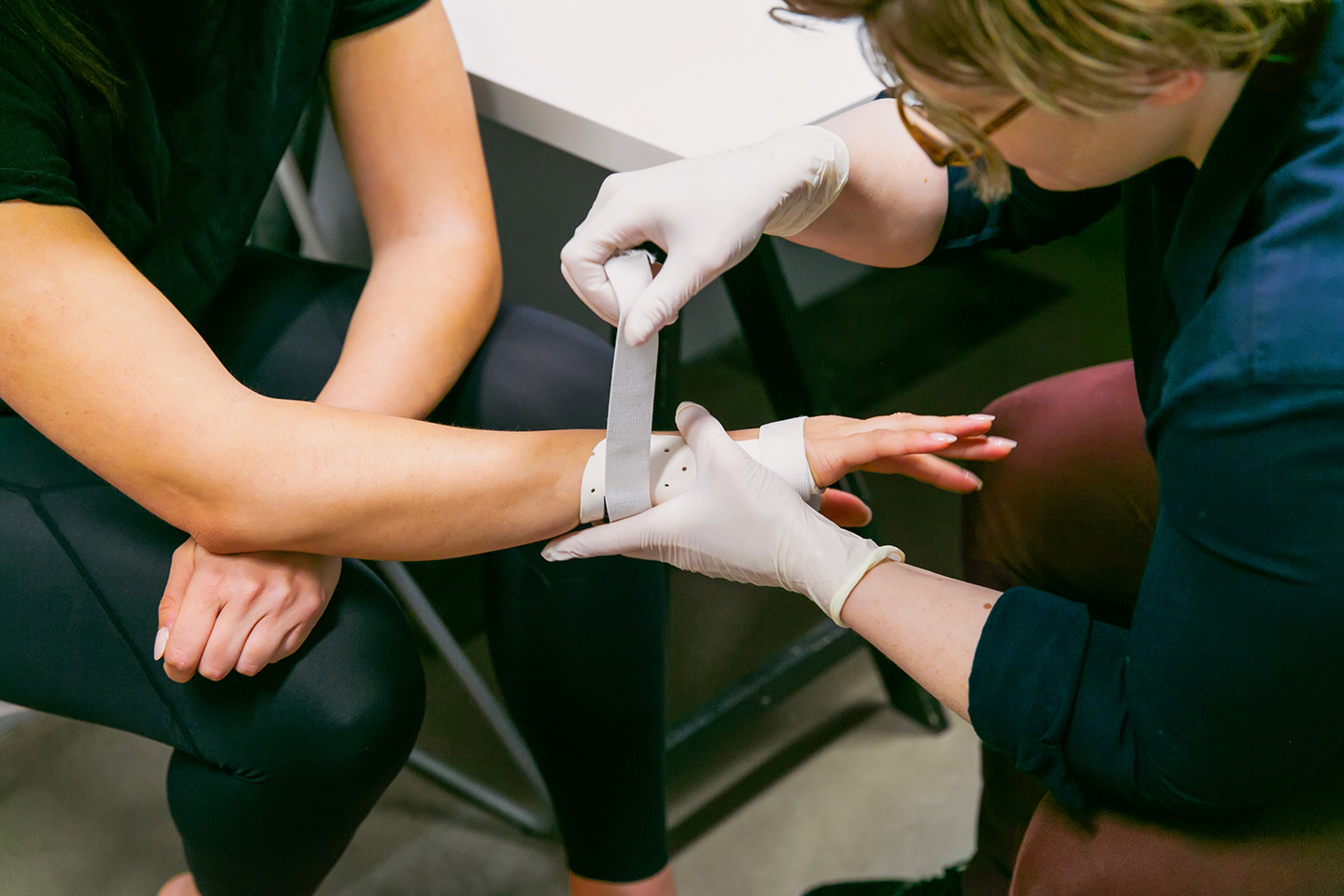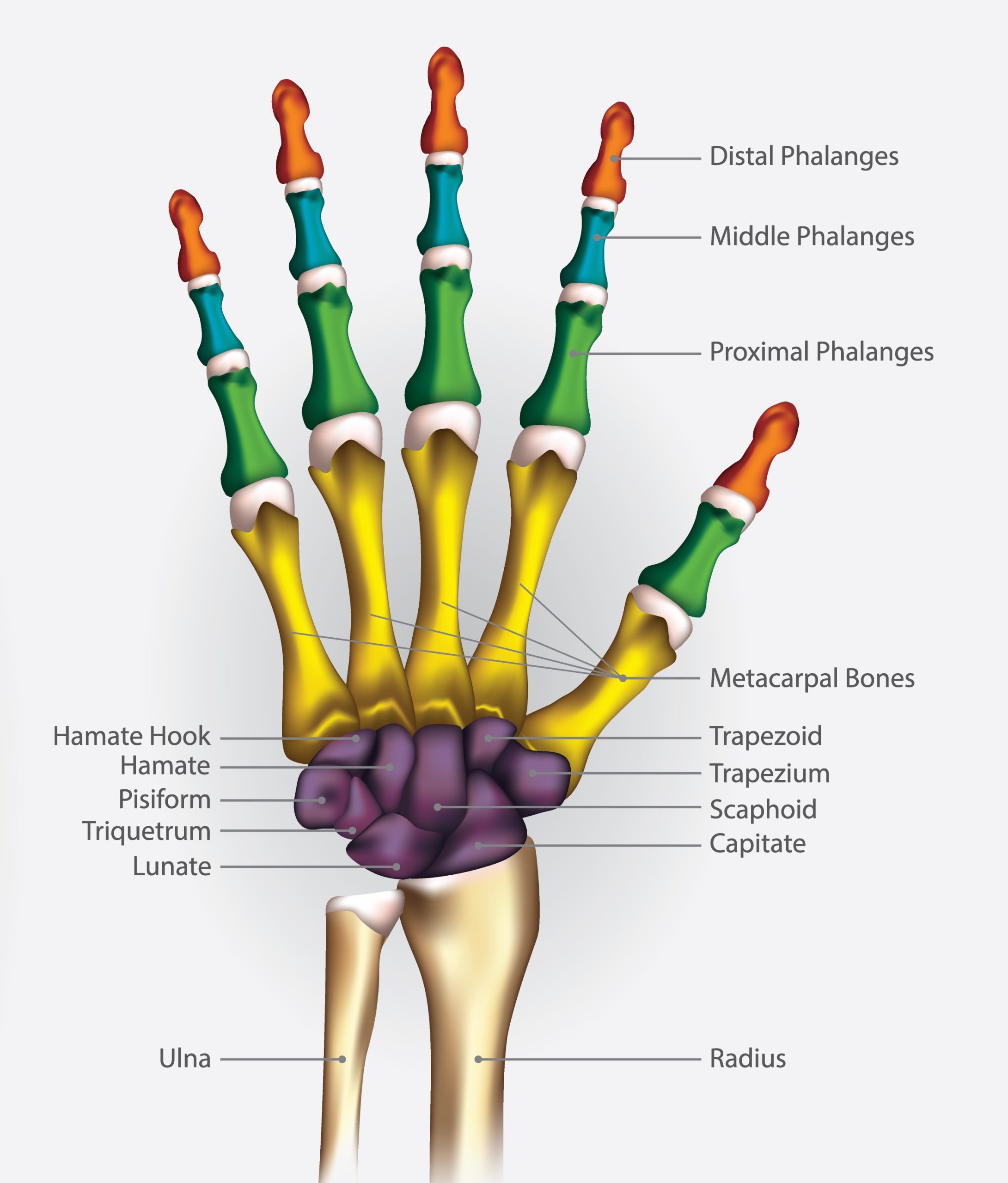Metacarpal Fractures Melbourne
Metacarpals are the long bones found in your hand, while their equivalent in the foot is the metatarsals. These bones connect your wrist to your fingers and are susceptible to fractures, which commonly occur due to:
- Direct impacts/trauma
- Falling
- Pushing injuries
There are five metacarpals (referred to as 1st, 2nd, 3rd metacarpal and so on) and fractures can occur in any combination. Most commonly people break the fifth metacarpal, which is connected to the little finger on the outside of the hand. Generally, metacarpal fractures are less common than wrist fractures.
Treatment for Metacarpal fractures is available at all Orthotics Plus locations.

Treatment of Metacarpal Fractures at Orthotics Plus

Professional Splinting
In most cases of fractures, the key treatment involves immobilisation for a specific period.
When it comes to metacarpal fractures, the primary method of immobilisation is through the use of a splint, rather than a cast. Casting for metacarpal fractures can be quite challenging.
Typically, a splint is used to immobilise the fractured metacarpal as well as the adjacent metacarpal and the associated fingers. This is also referred to as a Wrist Hand Orthoses.
For instance, in the case of a fifth metacarpal fracture, we would immobilise not only the fifth metacarpal but also the fourth metacarpal, wrist, and related fingers.
The reason for immobilising the fingers as well is that the tendons of the fingers pass through the metacarpal region. By applying a brace across this area without immobilising the fingers, the tendons and related structures can exert force on the fracture, hindering the healing process.

Rehabilitation
During the immobilisation phase, which typically spans about six weeks, the primary focus is on keeping the affected area stable.
The main goal during this phase is immobilisation, with limited options for rehabilitation exercises. For instance, in the case of a fifth metacarpal fracture, you can still use your thumb and the second and third fingers, allowing for some limited functionality like gripping objects. However, the primary emphasis remains on immobilisation to promote healing.

Hand Therapy
Once the fracture has healed and is confirmed to be stable, most individuals can resume their regular activities without a specific rehabilitation regimen. However, if someone experiences difficulty regaining mobility or function in their hand, they may be referred for hand therapy or physiotherapy to address any lingering issues.
Hand therapy is performed by an Occupational Therapist or a Physiotherapist. Orthotics Plus can provide referrals should the need arise and we have good relationships with some of Melbourne’s leading hand therapists.
Risks of Metacarpal Fractures – Guidance on How to Mitigate Them
Fractures, including metacarpal fractures, carry a potential risk of non-union, which means that the fracture does not heal properly. Non-union can occur due to misdiagnosis, lack of diagnosis, or neglect of the fracture’s presence. Another rare circumstance leading to non-union is inadequate blood supply to a specific part of the bone, although this is uncommon in metacarpal fractures.
While non-unions are infrequent in metacarpal fractures, it’s crucial to consider the positioning of the bones during the healing process.
Upon initial injury, it is essential to have the metacarpal fracture appropriately assessed by a general practitioner or orthopedic specialist to determine the need for a splint. Properly positioning the bones through splinting can facilitate the healing process. In cases where the fracture isn’t appropriately managed with a splint, surgery may become necessary to ensure optimal healing and recovery.
Our experts are here to guide you through the best treatment options for metacarpal fractures to promote effective healing and minimise the risk of complications.

Contact Orthotics Plus for Professional Fracture Management
With over a decade of experience, Orthotics Plus is appropriate to consider for your fracture management.
- We collaborate with your GP, Physio and surgeons for the best possible care
- You can visit with existing X-rays or we can provide you with a referral to get them
- We monitor your rehabilitation (typically 6 week period) to check for non-union and preventative care
- Book, attend, receive fracture management and leave all on the same day
To get started, please browse our clinic locations pages.

FAQ
If you’ve experienced swelling, which is common following an injury, it can lead to changes in the fit of your splint. In cases where there’s excessive movement within the splint, discomfort from rubbing, or it’s slipping out of place, you might require a minor adjustment.
Our team can address this by heating and modifying the plastic of the splint to ensure it conforms accurately to your altered shape. The primary issue individuals encounter after casting is a change in their physical dimensions, which can affect the splint’s fit.
Orthotics Plus is here to ensure your comfort and optimal healing by making any necessary adjustments to your splint in the rare circumstance it is needed.